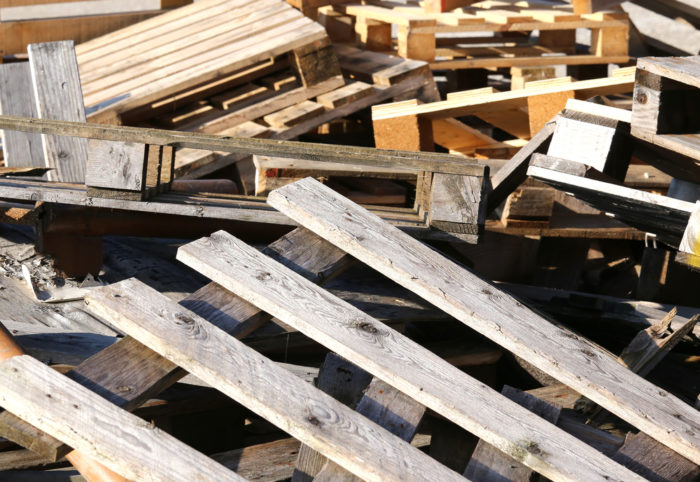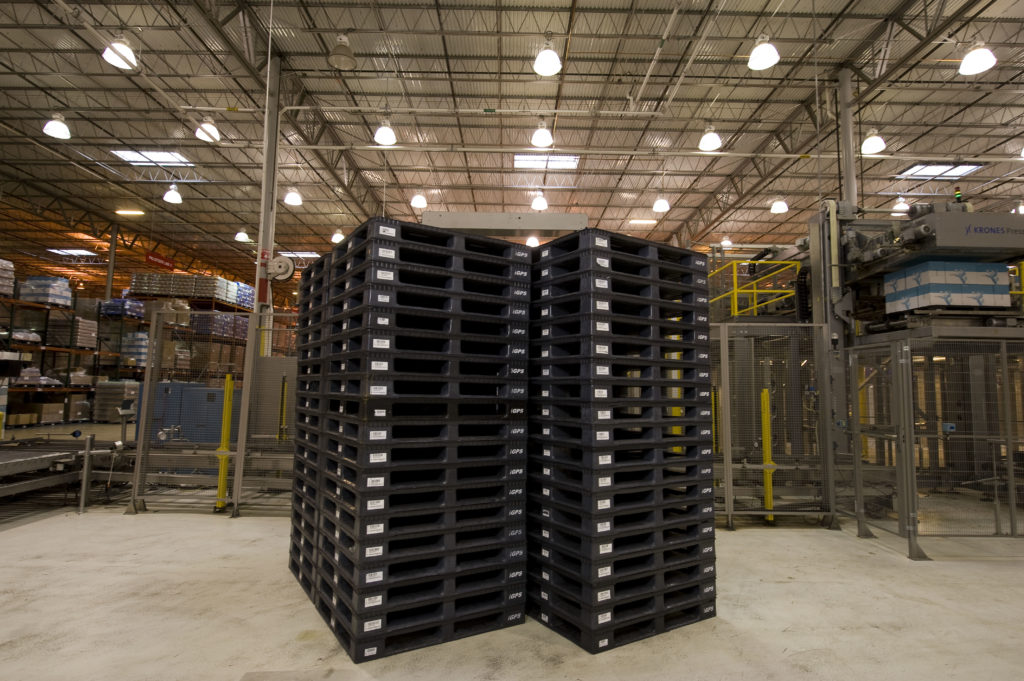Sustainability is an increasingly important topic in the supply chain, which could spell trouble for the future of wood pallets. For decades, wood shipping platforms have been the go-to for transporting products (and at one time, wood was the only type of pallet material available), but wood pallets don’t fully support a circular supply chain and therefore aren’t ideal for companies looking to make their supply chain more sustainable. For this reason, it’s likely that, in the future, recycled wood and wood composites will gain increased attention, while plastic will replace wood in many industries.
This doesn’t mean the traditional wood pallet will ever disappear entirely. Wood is a necessary part of the supply chain because it’s cheap, easy to build with, and relatively plentiful. However, we believe that over the next few years those still using wood will place greater focus on reducing unnecessary wood consumption, extending the useful lives of wood pallets, and simplifying recycling. Meanwhile, plastic pallets will become an even more prominent part of the supply chain as companies discover the benefits they offer.
Predictions for the Future of Wood Pallets
 Wood pallets will always have a place in the supply chain. For some, these platforms are an integral part of operations. However, as needs change and our economy becomes increasingly globalized, it’s expected that both the use of these pallets and their construction itself will change. Here are a few trends to look out for.
Wood pallets will always have a place in the supply chain. For some, these platforms are an integral part of operations. However, as needs change and our economy becomes increasingly globalized, it’s expected that both the use of these pallets and their construction itself will change. Here are a few trends to look out for.
- Pooling: Pallet pooling is a consolidated method of fleet management that allows companies to scale their pallet inventory as needed. By renting, rather than owning pallets, a supply chain manager can outsource much of the logistics involved in maintaining, retrieving, and transporting pallets. While pallet pooling is already popular in some industries, the many benefits it offers (greater sustainability, long-term cost savings, reduced logistics hassle, and the freeing up of warehouse space, to name a few) will likely lead to even greater adoption among other industries over the next few years.
- Standardization: In the U.S., the standard pallet size is 48×40 inches. Meanwhile, a Euro standard pallet is about 32×37 inches. With the increased use of automated equipment and pallet pooling, it’s likely more pallets will move to standard sizes to support equipment and minimize discrepancies. With the globalization of the economy and shipping, international standards may be necessary to simplify the supply chain.
- Wood composite pallets: Wood composites are a result of mixing several materials, like recycled wood, plastic, and straw with an adhesive material. These different elements are combined into a mulch that forms a more durable and sustainable pallet than a traditional wood platform.
Another pallet material is already replacing wood in many industries: plastic.
It’s likely that with time, advances in recycling and wood composites will help to make wood pallets more sustainable and useful to manufacturers. However, another pallet material is already replacing wood in many industries: plastic.
Why Plastic Pallets Have Caught the Attention of Supply Chains
 Plastic pallets are gaining increasing use in the supply chain because they offer more than a few features that make them superior to wood. Just a few areas where plastic pallets offer advantages include:
Plastic pallets are gaining increasing use in the supply chain because they offer more than a few features that make them superior to wood. Just a few areas where plastic pallets offer advantages include:
- Hygiene: Wood is a porous material that can absorb spills, meaning that cross-contamination is a distinct possibility if wood pallets are not kept clean. Plastic, on the other hand, is non-porous, so it doesn’t absorb moisture. That makes it easier to clean, as pressure washing the surface will easily remove most debris and dirt with little risk of mold or mildew.
- Sustainability: Plastic is more durable and longer-lasting than wood, with high-quality pallets able to make as many as 100 trips through the supply chain. When a plastic pallet does reach the end of its useful life, it can be ground down and recycled to create a “new” pallet. This cradle-to-cradle sustainability reduces carbon emissions as well as the use of natural resources and keeps pallets out of landfills.
- Reduced transportation costs: Most plastic pallets weigh less than 50 pounds, which is significantly less than wood. That lower weight translates to reduced fuel usage during transportation. For truckloads that weigh out, lighter pallets mean that less of the truck’s weight capacity is dedicated to pallet weight, allowing more inventory to be transported. This can reduce the overall number of trips needed to transport a shipment.
- Automation compatibility: Equipment like Automated Storage and Retrieval Systems (ASRS) can be delicate and require careful calibration of pallets according to weight, shape, and size. Wood can make calibration a challenge as wood pallet weights and dimensions can fluctuate significantly. Wood is also relatively flimsy; wood platforms often crack and splinter, and loose wood shards and nails may jam conveyors and other expensive machinery. Plastic pallets have a unibody construction with no hardware or screws and their size and weight stay consistent, minimizing wear and tear and making calibration easy.
Pooling models and standardization will help to improve sustainability in the supply chain.
The future of wood pallets is about making the most of existing resources and working to eliminate the waste wood platforms create. Pooling models and standardization will help to improve sustainability in the supply chain, as will more environmentally friendly composite materials. For industries that are able to switch to a more advanced shipping platform, plastic pallets are playing—and will continue to play—a crucial role in bringing supply chains improved durability and operational efficiency.
iGPS plastic pallets are excellent tools to support your company’s automation, sustainability goals, and efficiency efforts. To learn more about renting our pallets, contact us at 1-800-884-0225, email a specialist at switch@igps.net, or visit our contact page.



